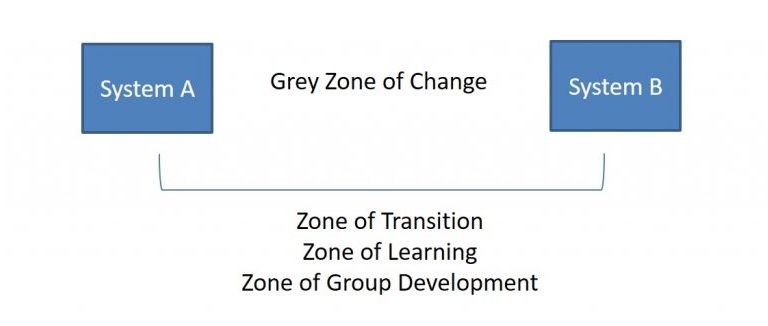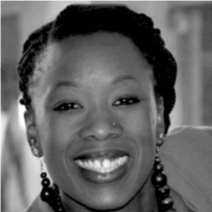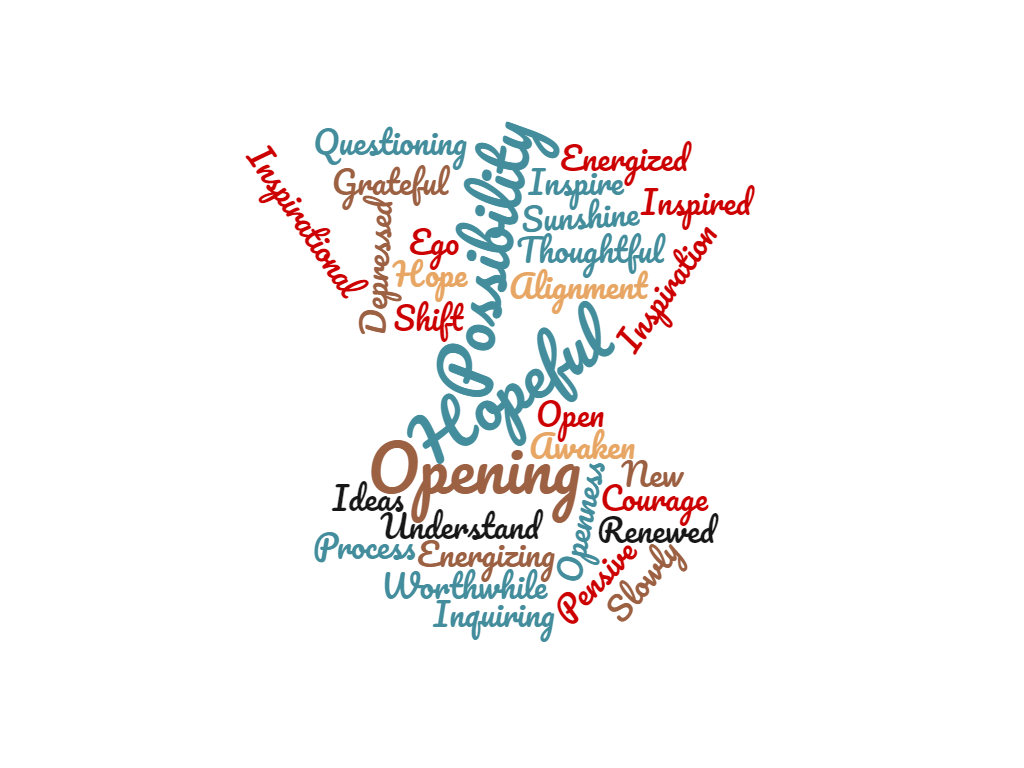The Zone of Transition
As popularized by William Bridges, change is an event and transition is the individual psychological experience underlying the change event. This work has provided a framing for leaders and change practitioners to understand why achieving successful change outcomes takes much longer than the moment when the ribbon is cut or the system is in place because people need to transition. My favorite personal example to understand this is recalling the difference between the event of birthing my first child and the transition experience of accepting what it really meant that I had become a mother after we brought her home. Furthermore, so many of the changes we need to make in today’s world are not easily defined, are marked by a series of overt and covert events, do not necessarily have a defined end state that we can point to and require a diverse mix of people and networks to be achieved. These are the changes being marked as complex or adaptive challenges. My favorite one to think about in this frame is the current reality of our present and future world where humans and machines co-exist and work together.
The Grey Zone of change incorporates the whole transition experience. Each of us need to come to grips with what is ending for us in this new world, what clarity we need from the uncertainties and questions we have and what possibilities we can step into in the new order of things. According to the World Economic Forum, there will be many.
The Zone of Learning
In the grey zone, much learning needs to happen. The learning zone I envisage here is the zone to which many human development, developmental psychologists and learning theorists have referred to. In Western thought, this has included Piaget’s references to the process of adaptation, assimilation and accommodation. Vygotsky talked about a zone of proximal development where children learn with a knowledgeable other guiding them to transition from not knowing or knowing how to perform. [2]Although Vygotsky passed away before developing this work, I extend this thinking into learning in adulthood and in the workplace that includes support from others – peers, mentors, coaches, leaders and all who serve as learning partners. More recently, Robert Kegan has talked of the “‘regions’ between an event and a reaction to it–the place where it actually becomes an event for that person” (Kegan, 1982, p. 2). This is the “zone of mediation where meaning is made” (Kegan, 1982, p. 3).[3] In a sense, Kegan’s rendition incorporates the experience of transition and learning via meaning-making and sensemaking that happens in the grey zone. In non-western philosophies the need for learning in order to bridge the gap between not knowing and knowing/acting have long been attributed to engaging others – the elders and/or the collective – to discern the way forward. This brings me to the zone of group development.
Zone of Group Development
Transition and learning needs to happen in the grey zone at an individual level but it must happen at the level of the whole systems as well. The collective of people need enough shared experience of transitioning and learning together to realize the development they need to achieve change. Of course, this is fraught with the complexities and chaos that ensues in the grey zone of change, underscored by issues of leadership, individual engagement, human agency and choice as a system tries to move from disruption to coherence and a new equilibrium and narrative. This is the tough stuff (yes, this is tough, not ‘soft stuff’) that is the make or break in whether a collective human system will change.
So what? Now what?
The net effect of a system that has transitioned, learned well and developed together is transformation. It is a new state in which the collective think, act and are fundamentally and qualitatively different than before.
Leaders and practitioners working to achieve systemic and/or transformational change must therefore understand both the individual and group/systems dynamics needed to achieve change that leads to transformation. They must create the conditions for individual, group and collective transition, change and development. Navigating the grey zone to achieve all this – not just a successful change event or short-term behaviour change – is required. Dialogic OD orientations allow us to navigate the complexity of the grey zone, while diagnostic orientations allow us to track beginning and end states, measure progress, make incremental changes and track the evolution and development of the system. I am intrigued by these ideas and will keep blogging about my thinking about the grey zone, so stay tuned…
~~~






